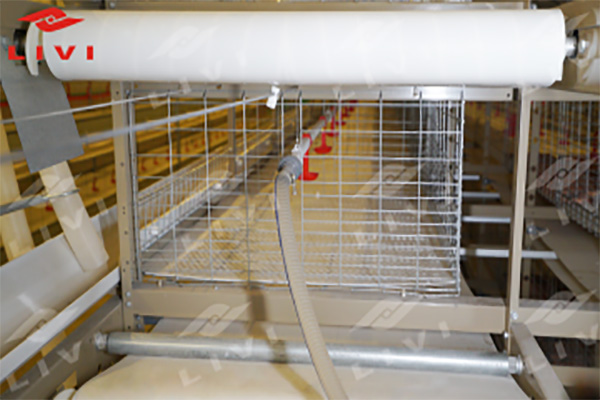Automated Chicken Farm Subsidy Policy in Tanzania: Optimizing Poultry Production
Time : 2025-07-03
The automated chicken farm subsidy policy in Tanzania has emerged as a critical tool for boosting poultry production in the country. This policy aims to enhance the efficiency and sustainability of poultry farming through the utilization of modern technology and government support. In this article, we delve into the intricacies of the automated chicken farm subsidy policy in Tanzania, its impact on the poultry industry, and the role of professional poultry equipment in optimizing production.
Background of Poultry Farming in Tanzania
Tanzania has a significant poultry industry, contributing to food security, employment, and economic growth. The country has approximately 15 million chicken households, which provide an important source of protein for the population. However, traditional poultry farming practices often lack efficiency and scale, resulting in suboptimal production.
The Automated Chicken Farm Subsidy Policy
To address these challenges, the Tanzanian government introduced the automated chicken farm subsidy policy. This policy provides financial support and incentives for farmers to adopt automated chicken farming practices. The goal is to promote the adoption of modern technologies, improve productivity, and ensure better living standards for farmers.
Objectives of the Policy
1. Enhancing Production: The primary objective is to increase the productivity of chicken farms by adopting automated systems that minimize manual labor and optimize feeding, watering, and health management.
2. Improving Livestock Health: Automated systems can help monitor and manage the health of poultry more effectively, reducing the incidence of diseases and improving overall livestock welfare.
3. Sustainable Development: By promoting the use of sustainable practices and equipment, the policy aims to reduce the environmental impact of poultry farming.
4. Economic Growth: Increased production and efficiency can lead to higher revenues for farmers and contribute to the overall economic growth of the poultry industry.
Implementation of the Policy
The implementation of the automated chicken farm subsidy policy involves several key components:
1. Financial Assistance: The government provides financial assistance to farmers for the purchase of automated equipment, including feeders, drinkers, automated lighting, and environmental control systems.
2. Technical Training: Farmers are provided with training on how to operate and maintain the automated systems effectively.
3. Support Services: Extension services are offered to farmers, including veterinary care, feed quality control, and marketing assistance.
4. Policy Monitoring and Evaluation: Regular assessments are conducted to ensure the policy’s effectiveness and to make necessary adjustments.
The Role of Professional Poultry Equipment
The success of the automated chicken farm subsidy policy in Tanzania is closely tied to the adoption of professional poultry equipment. Such equipment not only helps in increasing production but also ensures that the chickens are reared under optimal conditions. Here are some key aspects of poultry equipment:
1. Feeding Systems: Automated feeding systems, such as nipple or chain feeders, help in ensuring that chickens receive the right amount of feed at the right time, reducing waste and improving nutritional intake.
2. Drinking Systems: Proper water management is essential for healthy poultry. Automated drinkers provide continuous access to fresh water, promoting hydration and overall health.
3. Environmental Control Systems: Climate control, lighting, and ventilation are crucial for creating a favorable environment for chickens. Automated systems can monitor and control these factors to ensure optimal living conditions.
4. Monitoring and Recording Systems: Equipment that enables farmers to monitor the health and behavior of their chickens can help in early detection of diseases and timely interventions.
5. Sanitation Systems: Proper sanitation is crucial in poultry farming to prevent the spread of diseases. Automated cleaning systems can help in maintaining hygiene and reducing the risk of disease outbreaks.
Case Studies
Several case studies have highlighted the success of the automated chicken farm subsidy policy in Tanzania. For instance, a small-scale farmer who received government support to set up an automated chicken farm reported a 50% increase in production within a year. This farmer also noted a significant reduction in disease outbreaks due to the better environmental conditions provided by the automated systems.
Challenges and Recommendations
While the policy has been successful in many cases, it is not without challenges. The high cost of equipment, lack of technical expertise, and limited access to financing are some of the barriers faced by farmers. To overcome these challenges, the following recommendations are made:
1. Government Funding: Continued government support for financial assistance and training programs is essential for the success of the policy.
2. Partnerships with NGOs and Private Sector: Collaborating with NGOs and private sector companies can help in providing technical expertise and reducing equipment costs.
3. Sustainable Practices: Emphasis should be placed on the adoption of sustainable practices to minimize environmental impact.
4. Policy Review: Regular review of the policy is necessary to ensure that it remains relevant and effective.
Conclusion
The automated chicken farm subsidy policy in Tanzania has the potential to revolutionize the poultry industry, improving production, reducing costs, and enhancing the overall welfare of farmers. By adopting professional poultry equipment and implementing sustainable practices, Tanzania can achieve greater efficiency and self-sufficiency in poultry production.












